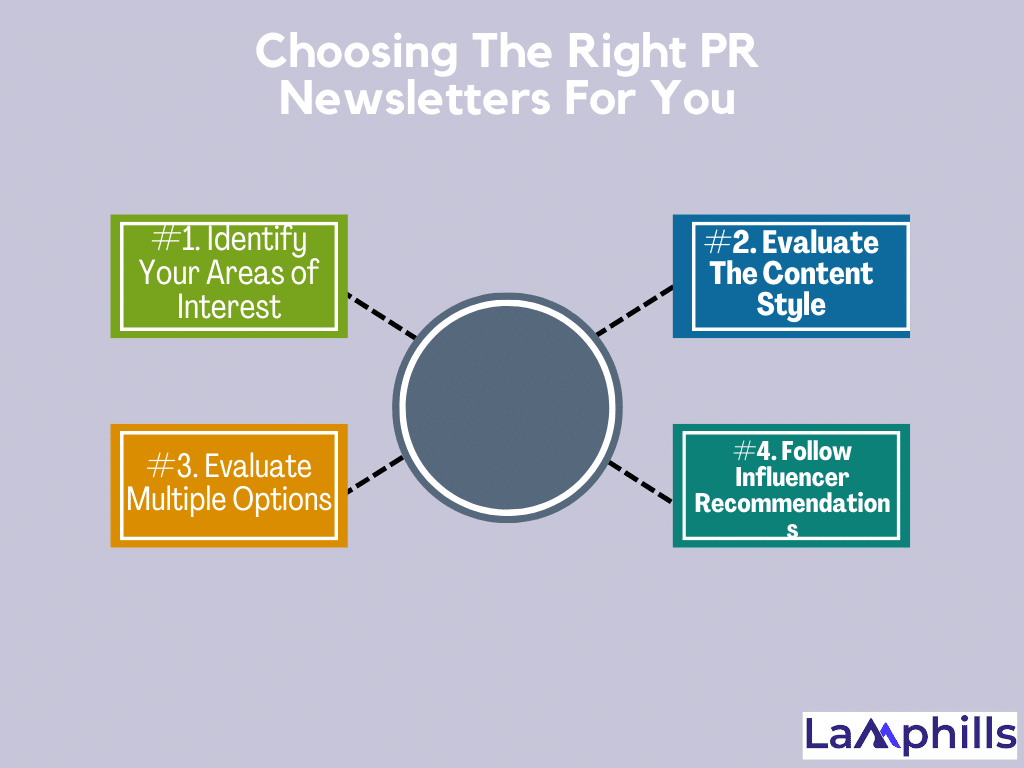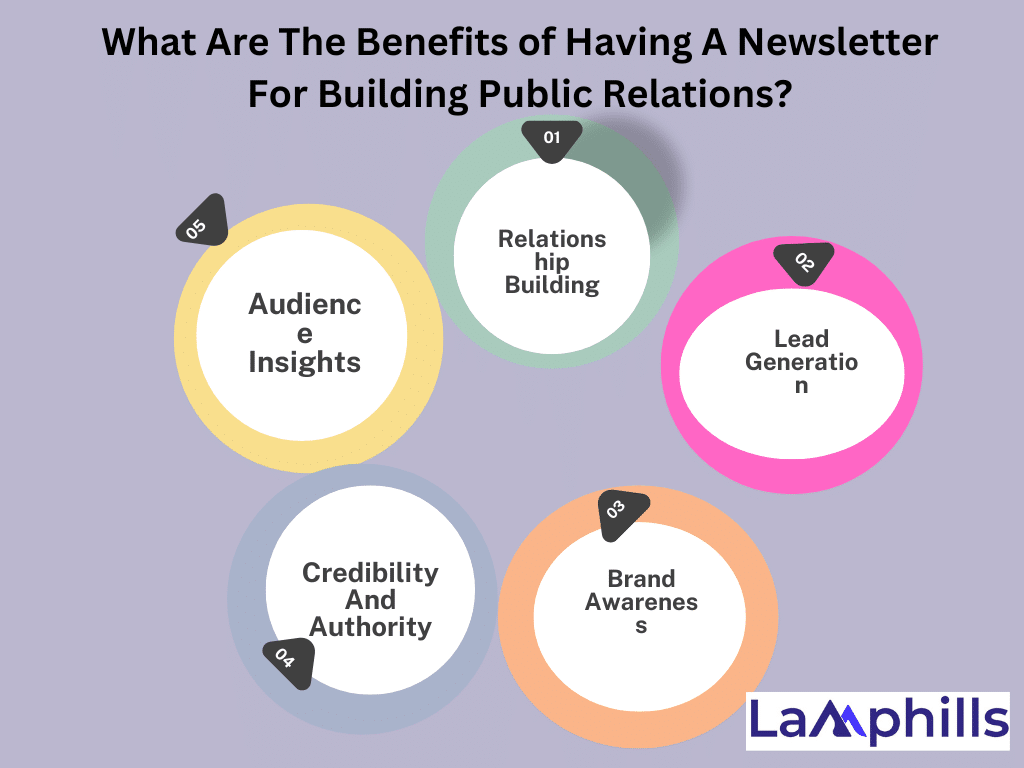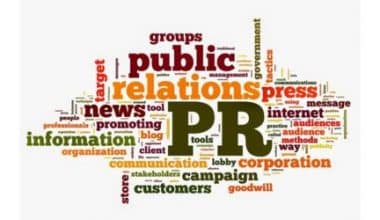It’s difficult to keep up with the ever-changing world of public relations (PR). With trends changing and new communication platforms appearing virtually every day, it is critical to continue learning and adapting. But, let’s face it, we don’t always have the time to surf through countless feeds or read lengthy study studies. This is where PR newsletters come in handy—they offer industry knowledge right to your inbox, typically in bite-sized, digestible formats.
Newsletters are a convenient method to receive timely, relevant information as it becomes available. Some people make it a daily habit to check their inbox first thing in the morning and eliminate junk mail. However, the correct type of newsletters, particularly in public relations, can be an easy way into the most recent developments of news stories, campaigns, and strategies, so you don’t have to go looking for them. Below, I’ll share some of my favorite PR newsletters, as well as those recommended by fellow professionals, to help you stay sharp in 2024.
Key Takeaways
- For PR professionals, newsletters are a convenient way to stay updated with the latest trends, tools, and strategies without needing to spend time scrolling through various sources.
- Identifying newsletters that align with specific PR interests—like crisis management or digital PR—can significantly enhance their value, making it easier to stay relevant in the field.
- PR newsletters range from informational (industry updates), and promotional (product highlights) to relational (building deeper connections), catering to varied professional goals.
- The best PR newsletters often feature insights from respected industry thought leaders, adding depth and reliability to the content they provide.
- Testing multiple newsletters and following influencer recommendations can help PR pros find the most valuable sources, ensuring their inbox is filled with useful, engaging content.
What is a PR Newsletter?

A newsletter is a tool that businesses and organizations use to convey relevant and valuable information to their consumer base, prospects, and subscribers. They provide you with direct access to your audience’s inbox, allowing you to publish relevant content, promote sales, and drive traffic to your site.
Newsletters are a type of email communication in which you share information with your subscribers. Newsletters, which range from promotional emails to industry news, are a method to engage your contacts in a dialog that extends beyond transactions. Finally, they assist you in establishing your reputation and reliability among your subscribers.
Email newsletters are popular among businesses because they are multi-purpose. They assist you in sharing relevant news and information with your subscriber group. Newsletters can be used to:
- Promote new products
- Announce sales
- Share tips
- Celebrate a holiday
- Discuss industry news and events
- Promote a new store location
- Keep clients up to date on what’s happening at your business
Newsletters are part of a larger digital marketing strategy and can be used alongside social media to diversify your relationship with your subscribers.
What is The Objective Of A Newsletter?
The purpose of newsletters can be as varied and dynamic as the businesses that utilize them. While the overarching objective is maintaining a consistent and valuable communication channel with subscribers, the specific aims can diverge significantly.
- Brand Awareness: elevating and maintaining the brand’s presence in the minds of consumers.
- Promotion: Highlight new products, services, or offers to drive sales and engagement.
- Education: Offering insights, tips, and valuable content related to the industry or product offerings.
- Customer Retention: Nurturing existing customer relationships through exclusive content and offers.
Each organization should align its newsletter strategy with its unique goals. This will help ensure that the content sent to its subscribers is both purposeful and impactful.
What Are The Three Types Of Newsletters?
The three primary types of newsletters are informational (focused on sharing news and updates), promotional (highlighting products, services, or offers), and relational (geared towards building and nurturing customer relationships).
Criteria For Selecting Top PR Newsletters
Over the years, I’ve subscribed to a lot of newsletters—some great, some not so much. Here’s what I look for before committing my inbox space to a new subscription:
- Relevance: Does the newsletter cover the areas I care about, like media relations, digital PR, or crisis communication?
- Expert Contributors: Does it feature thought leaders or respected voices in the industry?
- Frequency & Consistency: Can I rely on it to arrive on schedule, or does it come sporadically? Consistency is key for me because I like to build a routine around my reading.
- Reader Reviews & Feedback: Sometimes, I check online reviews or ask colleagues for recommendations.
Choosing The Right PR Newsletters For You

You might be wondering, with all these great options, how do you choose the ones that will be most valuable for you? Here’s what I’ve learned through trial and error:
#1. Identify Your Areas of Interest
Are you more focused on digital public relations, media relations, or crisis management? Defining your focus helps to narrow down your possibilities. For example, if you are interested in crisis communication, you may be drawn to PRovoke Media’s in-depth crisis analysis.
#2. Evaluate The Content Style
Some publications, such as The Hustle, are easygoing and enjoyable, while others, such as PR Daily, take a more official tone. Choose one that corresponds to your reading habits. This template will guide you through assessing the effectiveness of PR newsletters based on key criteria like content quality, frequency, relevance, and overall value.
#3. Evaluate Multiple Options
One tip I learned early on was to join up for a handful and try them out for a month. If they clog your inbox without adding any value, you can unsubscribe without feeling bad.
#4. Follow Influencer Recommendations
Some of my best newsletter finds came from PR influencers I follow on LinkedIn. They often share their favorites, and it’s a great way to discover new content that you might not stumble upon otherwise. With that said, let’s dive into the list of my top picks for 2024’s best PR newsletters.
20 Must-Read Public Relations Newsletters for Professionals in 2024
If you’re tired of falling behind in the fast-paced world of management, it’s time to level up with these must-read management newsletters, where knowledge is power and success is only a click away.
These top management newsletters will provide you with the inside scoop on how to become a successful manager. Say goodbye to racing to keep up and hello to confidently staying ahead of the curve with manager newsletters, since foresight has never looked better in your email.
#1 Spin Sucks
You’ve probably heard of Spin Sucks, Gini Dietrich, or the PESO model; if not, check them out! Spin Sucks began as a blog and has now become a thought leader in the public relations business. With books, podcasts, certificates, and a community, they address critical concerns for PR professionals.
Their newsletter (and other sites) provide valuable PR insights. It aspires to transform people’s perceptions of the public relations industry by advocating high ethical standards and great education. Where do I sign up? Look at the footer of their websites, such as Spin Sucks Resources.
#2 PR Week
PRWeek is the go-to source for quality PR news and insights – and now you can access it from your inbox with the PR Week newsletter. What’s nice is you can preview them before you subscribe: certainly helpful to decide to sign up for (yet another) newsletter.
For the U.S. market, it comes in a few variations:
- PRWeek Healthcare Weekly: covering this specific area, available for free
- PRWeek Dashboard Weekly: focused on the latest tools in communications technology, also available for free
- A daily or weekly summary of the most important PR news: open to paid subscribers
- Breaking news alerts: available to paid subscribers
Apart from these, in the paid plan you also get access to PRWeek’s full online content. PRWeek covers also two other areas, the UK and the Middle East, mostly with free newsletters, like:
- Middle East weekly edition
- the UK Weekly edition
- Public Sector Briefing
- Healthcare Bulletin
- Breaking News
- PRWeek UK Daily News, which is the only newsletter exclusively available to subscribers.
Where to sign up? You can find all available options on PRWeek’s site.
#3. The Grapevine
The Grapevine’s motto is “One email.” Once per month. ‘No BS.’ It’s a creative content newsletter that delivers concise monthly information regarding digital PR and marketing initiatives. You’ll find inspiration tailored to your specific niche, learn about innovative PR methods, and see which campaigns are receiving the most likes.
The Grapevine is one of the few publications that provides a detailed evaluation of the most effective campaigns. The newsletter dissects its techniques and provides advice on what you should strive for in your career.
#4. Link in Bio by Rachel Karten
If you’re a PR expert who also dabbles in social media to amplify your messages, Link in Bio by Rachel Karten brings you interviews with the experts who work in press every other day. Rachel has ten years of experience in media with Bon Appétit and Epicurious and created the newsletter so you can learn from people who live and breathe the internet. Past guests include John Sabine, Social Director for Merriam-Webster; Saad Khan, Brand Social Lead at Shopify; and Travis Lyles, who runs the Instagram team at the Washington Post.
Rachel’s expertise is relevant and educational. Through the interviews, you’ll get an insider scoop on the strategies and work processes of successful media connoisseurs.
#6. Michael Smart
Michael Smart is a well-known public relations trainer and coach who has helped customers gain publicity in publications such as the Washington Post, Wall Street Journal, and TIME Magazine. The former journalist now guides industry executives through their career and personal journeys.
He manages the Inner Circle group, which sends out a weekly newsletter full of concrete techniques and tools to help you expand your skill set. Each weekly blast is designed to be a mini-lesson on a vital part of a public relations practitioner’s job, ranging from managing journalist relationships and developing engaging proposals to pay negotiation recommendations.
#7. Axios Media Trends Newsletter
If you’re unfamiliar with Axios, you should be, especially given the current state of affairs. Axios offers various newsletters, but we’re particularly interested in the Axios Media Trends email, which is published by media writer Sara Fischer (previously of The Washington Post and The New York Times). Sara compiles the most recent media-related news and analysis every week.
If you want a peek at what you can expect before you subscribe, take a look at the newsletter archives. In the Jan. 11 edition, she breaks down seven important media stories, including Univision joining the streaming wars and Chalkbeat’s expansion from education.
#8. PR@ctical Weekly Newsletter
Sarah Evans, founder and CEO of digital PR agency Sevans Strategy, publishes a weekly email newsletter called PR@actical.
This isn’t simply another newsletter with the latest PR news and trends. It focuses on practical techniques for increasing awareness, working with media sources, and developing an overall influential presence.
If you’re wondering about the newsletter’s contents, you can read previous versions before subscribing. These newsletters are quick and easy to read, with plenty of amusing emojis and GIFs.
#9. Sword and The Script Monthly Newsletter
The sword and the script, an Atlanta-based public relations firm, has been in business for more than a decade. The founder, Frank Strong, has a blog where he discusses public relations, content marketing, and social media.
I recommend signing up for the monthly email because it will do a lot of the work for you. What we mean is that it collects the most important, must-read articles on marketing, public relations, and social media, so you don’t have to spend hours every day trying to stay up with the news. If you want to get The Sword and The Script blog posts as they are released, sign up here. Note: The Sword and The Script generally focus on the B2B IT world, nevertheless we think all sectors of PR can benefit from this content.
#10. PRWeek
PRWeek is another public relations blog we highlighted, and it has loads of valuable resources for PR pros, including a ton of newsletters that’ll ensure you’re kept in the news loop. Email bulletin options include:
- Breaking News Alert: This is exactly what it sounds like — with this newsletter, you’ll get breaking news alerts for the PR and communications community.
- Weekender Newsletter: This newsletter hits your inbox Saturday morning, and it’s a great way to debrief on the past week. You’ll find a few long reads as well as industry highlights and trends.
- PRWeek Dashboard: PRWeek describes this as your “one-stop shop for content relating to social media monitoring, influencer management, media analysis, media monitoring, press release distribution and much more.”
PRWeek has additional newsletters available for its paid subscribers, including the PRWeek breakfast briefing, a daily newsletter and PRWeek weekly online edition, a weekly email that includes some special features and insights for PR pros.
#11. Muck Rack Daily
The Muck Rack Daily newsletter consists of high-quality and reliable news that comes directly from journalists to your inbox. This is a must-subscribe if you’re a PR professional involved in pitching because each newsletter gives a deep look at what journalists around the world are reading and writing about. Muck Rack’s news focuses on current events, media relations, measuring success, and industry pulse to give you a well-rounded overview of news and guides. Here’s what you can expect:
- Journalism job changes: A daily digest of journalism job changes to help you make sense of the movers, the shakers and the next place to catch your friend’s and colleague’s byline.
- Eavesdrop on journalists: Journalists send 100,000s of tweets a day. We find the tweets they send and the stories they share, then quote the best ones.
- News trends: Some pretty nutty things trend on Twitter, so we focus on topics trending among just journalists (though they can be a little nutty, too).
What makes it our choice: Muck Rack’s journalist resource is one of the biggest advantages of this newsletter because it focuses on the journalistic perspective to bring context into what you need to cover as a PR professional pitching to journalists.
#12. Provoke Media
Provoke Media, a premier network for PR professionals, publishes the Global Briefing monthly, which focuses on innovation and thought leadership in the PR sector. They, formerly the Holmes Report, attempt to inspire and elevate public relations professionals by sharing best practices and admirable work.
It has over 15,000 subscribers and provides broad knowledge about public relations through case studies, original research, and reporting, as well as an exploration of varied issues rather than recommendations. Established in 2000 by Paul Holmes as the Holmes Report, this platform provides the most recent news and opinion pieces, annual agency research, and worldwide PR firm rankings. PRovoke is a free weekly newsletter that collects all of the best insights and briefings in the media relations field from across the world.
Beyond industry insights from major global markets and commentary on emerging trends, this newsletter also highlights top people and agency updates from around the world, making it easy to keep track of who’s who in public relations.
#13. Ragan Daily News
Ragan Communications, Inc. is known for its PR conferences, but there’s more to it than that. On Ragan’s PR Daily, they cover public relations industry news, including social media and marketing. And you can have them delivered to your inbox!
Ragan’s PR Daily gives short digests directing you to its communications weekly articles. The newsletter centers around current news about PR and communications and guidelines you can use in your PR career. Their sections include AI and automation, marketing, writer’s passport, and the consultant. You can get quick overviews on topics that interest you and check out the full articles on their website.
Their daily newsletter covers a wide range of topics: from internal comms to employee engagement. Yet, with the sign-up, you can choose your 3 most important areas of interest, so the messages will stay relevant. 📩 Where to sign up? Go to the Ragan Newsletter Subscribe page.
What makes it our choice: Ragan’s newsletter includes a talent hub section that is routinely updated. For those based in the US, the job board is a great resource for finding careers in communications and marketing.
#14. Michelle Garrett’s newsletter
Michelle Garrett is a PR consultant, writer, and speaker who helps B2B businesses create content, earn media coverage for their brand, and position themselves as thought leaders in their industry. She’s also published a book on B2B PR that became a bestseller on Amazon.
Michelle Garrett’s newsletter often includes practical tips, strategic advice, and insights that are invaluable for both seasoned professionals and newcomers to the field. Her newsletter might include information about upcoming industry events, webinars, or some other networking possibilities. 📩 Where to sign up? Go to her page and scroll down; the form is in the footer.
#15. The Marketing Millennials
The Marketing Millennials newsletter comes from Daniel Murray, founder of Authority B2B, a LinkedIn growth and brand-building agency. That’s why it should get your attention, as Daniel is talking a lot about branding. A LOT. Which is easily transferable to the PR area.
Learn about catchy email subject lines (to get the attention of your chosen journalists), how brand X is benefitting from their actions, and influencer marketing. All of this is soaked in humor, pop culture references, and rich insights. Where to sign up? You’ll find the sign-up place right on the Marketing Millennials page.
#16. Thea Chippendale’s newsletter
Thea Chippendale is the founder of the PR agency TLC. Apart from PR services, she offers consulting, mentoring, and insights on PR strategy. She specializes in French PR, doing outreach to prestigious outlets.
Her newsletter covers PR hot topics, campaign roundups, and tips from invited PR experts. Thea has a wide perspective on the PR industry and delivers valuable information in a short and sweet form. She also adds exclusive materials to help you with campaign ideation. Join the mailing list right on TLC Freelance’s page.
#17. Buffer
Buffer’s newsletter includes exclusive email-only content and blog posts. The blogs cater to small businesses and social media marketers, as well as frequent news and case studies. Beyond this, the newsletter includes general content about media monitoring for beginners with guides and explanations, as well as specific spaces for professionals to expand their abilities. What makes it our choice: Buffer has a Flow series about social media strategies and marketing, alongside an Overflow engineering series that covers the latest work and learnings from Buffer’s engineering team.
#18. Pretty Little Marketer
Pretty Little Marketer, which began as a freelance endeavor, is a London-based social media marketing agency. Their newsletter discusses social media trends, popular campaigns, practical tips, and how to use them. Instead of trending news, they focus on personal branding and marketing suggestions, which are supplied via a weekly newsletter published every Thursday. It’s great for freelancers working in public relations or those starting in social media marketing.
What makes it our choice? Sophie Miller, the founder and CEO, is a social media coach who prioritizes education. The newsletter simplifies social media by offering resources such as webinars, events, special offers, and downloads.
#19. 13. PRNEWS
PRNEWS serves as an educational resource for public relations professionals, government agencies, and non-profit organizations. Its weekly focus on skill development for PR and marketing professionals, with content covering topics such as social media and digital PR to keep you up to date on the newest trends. The newsletter subscription also includes trend updates, best practices, market insights, and management advice.
What makes it our choice? PR News offers a customizable newsletter subscription. These possibilities include a weekly insider newsletter, weekly data and trends, weekly crisis communications, weekly digital tools, and five top stories of the week. It also has a convenient employment board.
#20. The Daily Carnage
As a public relations professional, you may also be required to stay up to date on marketing trends. The Daily Carnage is great for expanding your horizons with in-depth blogs and podcasts covering the most recent marketing trends, updates, and reports. You’ll learn about storytelling for marketing, SEO, social media, and current events, with topics ranging from retail and culture to technology and health.
What makes us choose: The newsletter frequently contains polls and video advertising from prominent brands. You can analyze their marketing strategies or simply enjoy the fun.
What Are The Benefits of Having A Newsletter For Building Public Relations?

I am pretty sure you have subscribed to at least a couple of newsletters in the last couple of years. You probably had a clear understanding of the benefits expected from these newsletters, such as quality content or interesting news. But have you ever wondered what benefits the companies were getting by sending you these newsletters? Well, there are plenty; here are five of the most important ones.
#1: Relationship Building
Newsletters can serve as a great medium of communication for building relationships between your brand and your target audience. You can contribute to this relationship-building process by sharing relevant and valuable content with your users and gaining their trust. Here are two reasons why newsletters build relationships.
- Content Relevance
Current individual and B2B email marketing tools you can use to send out your newsletters allow you to segment your audiences based on their needs and interests. This feature means the content each subscriber receives contains the information they find valuable and interesting. As a result, they see you as a brand that knows what they want.
- Constant Communication
The regular nature of email newsletters (your subscribers constantly see your brand name in their inbox) helps your users develop a sense of familiarity with your brand.
#2: Lead Generation
Although you will most likely have dedicated email campaigns for generating leads and passing them through your funnels, you can consider using your email newsletter templates to help you attract potential customers as well. Email newsletters have a couple of great benefits when it comes to lead generation.
- Engaged Subscribers
Your audience consists of people who have seen your subscription CTA while roaming your website, clicked on it, and joined your email newsletter.
The fact that they have proactively subscribed to get more content from you demonstrates that they are interested in your brand and products—making them a high-quality target for converting into a paying customer.
- Middle of the Funnel Content Delivery
Since email newsletters deliver middle-of-the-funnel informational content, you can use them to warm up leads who want to learn more about your brand or industry news (can be both).
Apart from that, sending out MoFu content is a natural way to establish yourself as the authority in your industry and niche.
- Organically-placed CTAs
Newsletters are also an excellent opportunity to talk about what you have to offer. Incorporate CTAs to take your users to landing pages where they can request a demo or sign up for your services. A well-placed CTA in an email containing the proper wording can lead to a 16-fold increase in sales.
#3: Brand Awareness
Another great benefit you can expect from your email newsletter campaign is an increase in brand awareness. You can achieve this awareness by constantly sharing content with your users about your brand’s story and presenting your values and mission. Some common ways to implement a brand storytelling campaign using your newsletters include:
- Sharing success stories and case studies demonstrating how you successfully met customer needs and employed your core values in practice.
- Sending “behind the scenes” content that shows how your team is working on covering the needs of your customers and delivering exceptional results to them. This strategy is a great demonstration of your brand values.
Apart from using newsletters as a platform for promoting your brand story, you can also take advantage of them to share the eye-catching visual elements of your brand with your subscriber list.
These elements include your brand colors, logo, and your visual style. By constantly exposing your new subscribers to your visual branding, you increase the chances of them recognizing you among the crowd.
#4: Credibility And Authority
As I mentioned earlier, email newsletters can also serve as a great platform for sharing content that demonstrates your expertise and thought leadership in your industry. Here are some of the common types of such content.
- Research Papers
Conduct research regarding a specific topic or area in your industry. Then gather data, analyze it, and share the results with your subscribers.
For instance, if you were an email marketing service, you could analyze all the emails sent through your platform and determine the best time and day of the week to send emails for each industry. Afterward, you can share these findings with your newsletter subscribers.
- Industry News and Commentary
An alternative way to demonstrate that you and your teammates are experts in your industry is by sharing the latest news relevant to your craft and adding your own commentary and analysis to it.
- Participation in Trade Shows
If you are taking part in a trade show popular for your industry, talk about it in your newsletter. A great hack for engaging your audience and building credibility is inviting your newsletter subscribers to the talks about industry-specific topics your teammates give during the trade shows.
#5: Audience Insights
The final benefit of email newsletters I would like to talk about is the analytics data and insights about your audience (e.g., telling if someone read your email).
You can use this information to build your buyer’s persona that describes the needs, habits, and interests of your users and adjust your email marketing strategy to target them specifically. To gather analytical data from your newsletter audience, you can use the tricks below.
- Questions on Signup
When your website visitors click on a CTA prompting them to subscribe to your newsletter, you can take them to a small form. There, they can share information about their demographics, industry, or areas of interest before you add them to your list of subscribers.
- Email Engagement KPIs
The majority of email marketing tools you can use to run your email newsletter campaigns come with analytics suites that can measure some of your main engagement metrics. For instance, it can be open rate, bounce rate, click-through rate, and conversion rate.
- Link and CTA Clicks
You are usually very limited in tracking how your users interact with the content of your email. Overall, email clients don’t really like tracking code running inside an email.
However, you can still track the number of clicks on the links and CTAs you have in your email by using UTM tags. To sum up, email newsletters are a great channel for communicating with your audience, building relationships with them based on trust and authority, and encouraging them to convert to paying customers.
Which type of newsletter is better? Crafted or curated newsletter.
It depends. For example, from a traffic perspective, a crafted newsletter is better because it sends traffic to your website or blog, whereas a curated newsletter mostly shares links from outside sources and sends traffic to them.
How often should I send a Newsletter?
The frequency of newsletters depends on the goals of the newsletter and the preferences of the target audience. Generally, newsletters should be sent at least once a month, but more frequent newsletters may be necessary depending on the content.
Conclusion
Subscribing to suitable PR newsletters can feel like having a trusted advisor in your corner, guiding you through the industry’s complexity. Whether you’re an experienced public relations professional or just starting, these newsletters provide a handy method to stay updated, learn new strategies, and network with other professionals.
With this extensive list, I believe you’ve decided to stop rejecting PR newsletters as junk mail. The carefully picked ones are an invaluable resource for streamlining your research and learning process. These newsletters provide advantages such as time savings, ongoing learning, and staying current in the ever-changing public relations world. Opting for the right newsletters from our recommended list not only boosts your knowledge but also encourages meaningful conversations. So, take a look through the list, subscribe to a few, and let 2024 be your most informed year yet!






